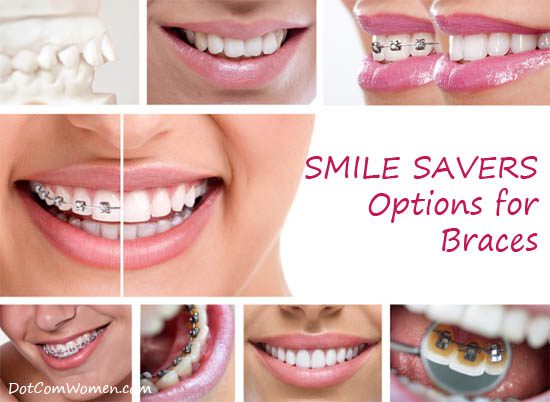Smile Savers: Adults Have Many Options When It Comes to Braces
Kids can be mean, making fun of others with crooked teeth or wearing the solution, braces. Adults are not as mean as kids but they are equally self-conscious. Adults want to look great, gaining the approval of peers as well.

Crooked, spaced or cramped teeth are not as aesthetically acceptable as straight, white teeth. Therefore, parents seek dental solutions for kids, and adults, who never had their teeth addressed, seek the same solutions.
However, as an adult, a number of immediate-appearance anxieties may rise regarding the daily experiences in being a ‘brace face.’ Actually, a range of modern Dental Tools and consequent solutions provides alternatives to traditional braces and their metal-like, intrusive appearance.
If you’re an adult searching for dental solutions, consider the following popular ones.
Invisalign
Invisalign works like braces, yet provided in removable sets that aid the trajectory of a straight smile. An ‘invisible’ appearance and the ability to take strips out of one’s mouth are two major advantages. However, high prices, and in some cases, the exclusion of insurance coverage, deters consumers from the decision. Furthermore, depending on the severity of deviation, Invisalign may not be a viable corrective option.
Lingual Braces
You might be wondering what the differences are between lingual braces and traditional at-home aligners. Thanks to advancements in the industry, there are now so many options available for those who want to improve the appearance of their teeth. From various in-office treatments to at-home options, you will always have something that will best suit your specific needs. Read more about the key differences between lingual braces and at-home aligners to understand what’s best for you
Lingual braces seek to combine the traditional effectiveness of metal braces with the preference for ‘invisible’ implementation. Lingual braces straighten teeth like traditional ones yet are placed on the inside of one’s mouth, limiting an onlooker’s ability to notice. Due to the metal’s placement, some find the dental fixtures to be an ongoing distraction, limiting speech patterns and scraping the tongue. Moreover, some lingual braces are more expensive than traditional ones, yet lingual solutions pop up in the most posh of places, including celebrity magazines and dentist offices providing smile makeovers in Manhattan.
Self-Ligating
Like, the lingual braces, self-ligating models seek to rid wearers of the discomfort of an onlooker’s notice of metal and wires. Traditionally, squares were fixed to teeth, supporting metal wires strung across the lower and upper teeth. But, self-ligating models use tiny staples to fix wires to teeth, greatly limiting the need for metal and the name, ‘brace face.’
Ceramic
Ceramic braces, akin to traditional metal braces, are off-white in appearance. However, it’s reported that ceramic braces are more brittle than traditional metal models and do stain, possibly presenting a yellowish appearance. While at one time, the almost-invisible initial appearance was a popular choice, today’s proliferation of solutions makes ceramic braces less sought.
Metal (Traditional) Braces
It’s effective, safe, proven, and more affordable than ever; traditional braces are solutions still popular despite the number of alternatives. Depending on one’s condition, it can take less than two years to gain a perfect smile using metal braces. Sure, there is some discomfort, and one needs to learn how to keep their mouth clean despite metal obstructions, but for decades, traditional braces have created beautiful smiles.
It’s never been easier for adults to afford braces and enjoy the diversity of choice provided by dental professionals. Seek more literature about one of the above solutions and discuss your particular case with your general dentist for referrals or direct procedures.
About the Author
Robert Ander has a passion for dental care. He often writes about general maintenance and innovative solutions.



